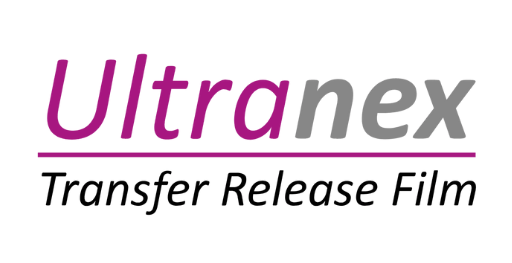
DTF printing technology allows high-quality prints on a range of materials. It is cost-effective for small batches, easy to use, and requires minimal pre-treatment requirements to generate full-color designs quickly. However, choosing a robust DTF film is imperative to use this technology for your printing business. In this post, we’ll explain all about DTF film and how to choose the best one for your needs.
What Is a DTF Transfer Film?
DTF transfer film is a coated PET (Polyethylene Terephthalate) film that is used for printing designs. The printing process involves using a DTF printer to apply designs onto the PET film, followed by the application of an adhesive powder. These designs are then transferred onto the garment with the help of heat and pressure. The result is vibrant and durable prints that you can transfer onto materials like cotton, polyester, leather, and more.
The PET film has a high-temperature stability, often surpassing 180 degrees Celsius. You simply need to print your design on a DTF heat transfer film with a DTF printer and sprinkle the adhesive powder. After that, just heat it up and dry it to get the heat transfer design, which can be stuck or transferred to a garment.
Composition of a DTF Transfer Printing Film
A DTF film consists of several layers which enable the best-quality prints. Ultranex DTF’s films consist of the following layers:
1. Inkjet ink receptive layer: It is a coating that allows ink to stick to the film and result in high-quality prints.
2. Heat release layer: It lies between the print and backing and enables the film to effortlessly peel off after heat pressing.
3. Base PET film: It is an ink-absorbing coating that gives the DTF film a matte frosted finish. The film does not appear transparent.4. Antistatic coating: This layer removes static electricity build-up during the printing process and prevents the risk of product damage due to dirt sticking onto it.

Are All DTF Films the Same?
DTF Heat transfer films vary according to factors like their composition, coating process, desired visual effects, and intended use.
| Category | Subcategory | Description |
| Peel Type | Hot Peel | Immediate peeling after heat application (140°C-150°C). Efficient for large patterns, may have specific coating requirements. |
| Cold Peel | Requires cooling before peeling. More versatile, suitable for wider range of fabrics, better wash fastness, cost-effective. | |
| Coating Process | Single-Sided Coating | Only one side treated for printing, other side is smooth PET base. |
| Double-Sided Coating | Both sides coated for enhanced stability, better ink and powder absorption, higher quality prints. | |
| Visual Effects | Glossy | Shiny finish. |
| Matte | Frosted effect, helps prevent sliding during printing. | |
| Specialty | Reflective, glitter, temperature change films for unique effects. | |
| Thickness | Various | Typically 75μ and 100μ. Thicker films offer better durability and print quality but can affect transfer process. |
| Material Composition | PET (Polyethylene Terephthalate) | Includes various coatings for ink adhesion and transfer efficiency. Specific formulation influences print quality and durability. Made from PET with coatings that aid ink adhesion and transfer efficiency, influencing print quality and durability. |
How to Make DTF Transfers with an Inkjet Printer
To use a DTF transfer film with an inkjet printer, you need a high-quality DTF film with rapid drying capability, an inkjet printer, a hot melt adhesive or DTF powder, a heat press, and a garment. After gathering these materials, use the following steps to make long-lasting DTF transfers with an inkjet printer.
1. Prepare your design. Ensure that it has a resolution of at least 300 DPI.
2. Load the film onto the printer with its matte side facing up.
3. Print the design onto the DTF heat transfer film and let the ink dry.
4. Wear gloves while handling the heat transfer sheet to avoid damaging the DTF film’s surface.
5. Apply the DTF powder adhesive within a minute of printing over all the areas of the design.
6. While drying or curing the powder, a temperature between 110℃ to 130℃ (230°F to 266°F) for four to two minutes in a powder shaker is recommended.
7. Keep the DTF film with the cured powder side down on your garment. With Ultranex DTF film, transfers should be applied from 130℃ to 180℃ for 20 to 4 seconds with 2 to 4 bars of pneumatic pressure. If the heat press is manual, keep medium to high pressure across all the corners of the bed.Ultranex DTF Film is specially designed to print textile transfers using DTF inkjet printers. It is available as single or double-sided film and features an antistatic coating for smooth printing and a matte release coating. Its top layer readily accepts a high quantity of DTF ink, and its receptivity not only enhances printing but also contributes to the wash fastness of the transferred design on your garment.
What is Hot Peel and Cold Peel DTF Film?
Hot peel DTF film can be peeled without the need for it to be cooled when you are transferring a design. You press it at 140-150℃ for 5 to 10 seconds and let it cool for 2 to 3 seconds.
In hot peel transfers, you remove the film instantly after heat pressing while it’s still hot, capitalizing the heat’s immediate adhesion properties. This bonds the design onto fabrics properly. It ensures complete integration of designs, better durability, and vibrant colors. A hot peel DTF film is ideal for the mass production of fabric garments like T-shirts.
A cold peel DTF film uses a silicone-based release liner that does not need heat to be activated. You press the film at 150-170℃ for 10-20 seconds. This film needs 30 seconds of cooling time before you peel it off. You can peel off a cold DTF film at room temperature and can use it for delicate fabrics that are unable to handle high heat. However, they are not as fast or efficient as hot peel transfers, and they may require a higher press time.
The longer peeling time associated with cold peel DTF makes hot peel films more efficient and fast. However, cold peel transfers are more durable than hot peel transfers because the adhesive can fully set, which leads to its stronger integration with the fabric. This,in turn, leads to better wash resistance.
| Feature | Cold Peel | Hot Peel |
| Release Liner | Silicone | Wax |
| Peel Temperature | Room temperature | Requires heat (140°C – 150°C) |
| Speed | Slower | Faster |
| Efficiency | Less efficient for mass production of designs | More efficient for mass production of designs |
| Washing Durability | Excellent | Good |
| Fabric Compatibility | Wider range, including specialized fabrics that cannot handle high heat | Only heat-resistant fabrics |
| Quality of prints | Sharper and highly detailed | High quality but demands careful execution |
| Finish | Matte | Glossy |
| Applications | Small designs, detailed work, special fabrics | Large designs, high-volume production, common fabrics |
How to Choose a DTF Film?
Now that you know much about DTF film, here are the key factors to consider when choosing the best heat transfer film:
Ink Absorption Capacity A high-quality DTF film has an excellent ink-absorbing coating to prevent issues like ink mixing or flowing on the film. If the film has poor ink absorption capacity, the ink will spread uncontrollably, which will lead to subpar print quality. The DTF transfer film has a special ink-absorbing coating, which gives it a matte-frosted appearance. The printed design thus remains sharp and vibrant.
Coating Quality
The film’s coating should be uniform and free from impurities. An uneven or contaminated coating can adversely affect the printing outcome, leading to blotchy or inconsistent designs.
Ultranex DTF’s films have a unique waterborne coating that improves production quality and minimizes emissions. They are also certified with the OEKO-TEX Eco Passport, which indicates that they are safe and non-harmful to humans.
Antistatic Coating
High-quality DTF films have an antistatic layer, so the film does not stick to the powder. The back layer antistatic coating reduces static in the handling and printing process, which is important for automatic printing machines and hot melt powder applications.
Powder Shaking Effect
After applying the hot melt powder, a superior DTF film facilitates a clean removal of excess powder. The powder removal is most visible around the edges of the design. This prevents unwanted residues that can mar the final print. With our DTF heat transfer films, you cannot see any powder particles on the nonprinted area or on the back side of the film.
Release Effect
Post-pressing, the film should peel off effortlessly without damaging your design. Films with a stable and uniform release layer make way for smooth peeling. They keep the integrity of the transferred image.
Transparency and Thickness
Opaque films with thicker coatings offer better ink absorption. A heavy coating transfers to the shirt and gives a heavy feel, while a light coating hinders the ink from correctly printing on the film. For most printing needs, a 75μ (micron) film suffices, while a 100μ film is recommended for higher-standard printing requirements.
High-Temperature Resistance
The base PET film must withstand the high temperatures involved in the heat transfer process without curling or melting. The heat-stabilized layer enables the film to remain stable during pressing. It leads to easy registration of colors in printing multicolor screen printer heat transfer.

Type of Peel
DTF films are categorized into hot peel and cold peel types. Hot peel films can be removed immediately after pressing, enhancing production efficiency, while cold peel films require cooling before removal. Choose the type that aligns with your workflow.
Single-sided and Double-sided DTF PET Film
Double-sided DTF PET films have higher ink and heat handling capability. They have a coating on both sides, making the adhesive stick better. A double-sided DTF film is more stable than a single-sided film, so it does not shift when you transfer the design. This results in better quality and durability of prints.
Desired Visual Effects
Depending on the specific requirements of your project, you might opt for films that offer special visual effects, such as glossy, matte, glitter, or reflective finishes. Selecting the appropriate finish can enhance the aesthetic appeal of your final product.
Compatibility with a Variety of Inks
The DTF film you choose should work with your printer and ink type. A good film is compatible with many types of inks, like water-based, solvent-based, plastisols, and digital laser.
Conclusion
DTF is a modern printing technique that is taking the apparel industry by storm. Choosing a high-quality DTF heat transfer film is key to long-lasting, highly detailed, and vibrant prints. If you are a beginner, you must know the composition of a good film and the factors that go into choosing one. A lot depends on the type of print you want and your production needs. Ultranex DTF is one of the few manufacturers of eco-friendly DTF films with ISO 9001:2015 and certification in Southern California. Our DTF films are made after deep research using our proprietary technology. No matter what your needs are, our products will facilitate next-level DTF printing.







